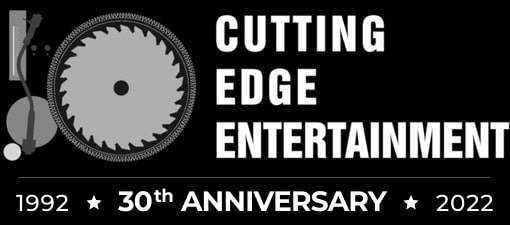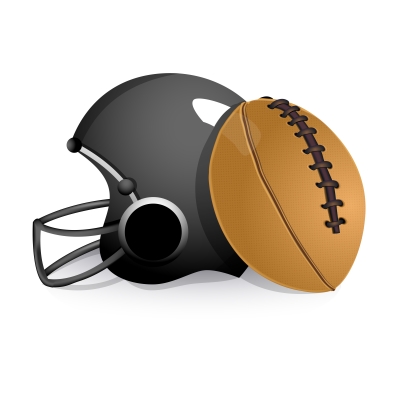Is Sunday Still Super?
It happens at this time every year. We prep ourselves for a day of relaxation and carbohydrates. We decide where to go and who to spend these prosperous hours with. The days before the event often take up more energy and preparation than the event itself. The average person, myself included, has spent more than a “few” hours figuring out the plan for the big day. However, the planning and the enjoyment that comes from it are different for each participant.
For one Sunday in February -it used to be in January-, the world settles down to watch the most over-hyped/promoted/inflated spectacle on television…the Super Bowl, an event that has traveled beyond what its original intentions were. During the developing days of professional football, two leagues –the NFL and the AFL- shared the spotlight and competed against each other. To determine who the “stronger” of the two leagues were they created an event that would prove the “power of football”. NFL fans/pundits will tell you that the NFL was the superior league and that the game was only to prove that the AFL was inferior. Joe Namath ruined that when he predicted the Jets victory in Super Bowl III and propelled the notion that “any given Sunday” was not a Hollywood creation. They called him “Broadway Joe” due to his larger-than-life personality and off-the-field activities, but it took someone with this attitude to launch the NFL to its present-day heights.
I do not know if the executives that invented the Super Bowl envisioned it would become what it has, but it is inescapable. Somewhere along the way it “jumped the shark” and took on a life that had little, or nothing, to do with football.
Everyone has a different reason for watching the Super Bowl. For many (me again!), it is the conclusion to another seven month journey from Training Camp to Championship. For others, it’s a social event and an excuse to gather with friends and family over greasy food and beer. The majority of viewers, the “casuals”, are simply interested in the enjoyment that comes with sharing a night with friends, watching the bloated commercial spots and the trailers for films that won’t be released for another six months. The portions of the show that appeal to everyone are the performances that are mixed throughout the night, beginning with the National Anthem and concluding with the halftime show.
As an avid fan of the Philadelphia Eagles, I have grown accustomed to enjoying the game for the aspects that are less “football” and more “American”. Despite my disdain for both teams participating this year, I was hoping for a competitive game and a few laughs during. As an avid music fan, disc jockey and concert-goer, the halftime show is something that consistently grabs my attention. Like the game itself, the halftime show has evolved into something that is a monstrosity onto itself.
During the early years of the Super Bowl, the halftime performance matched that of a college football game…it was nothing more than a well-known marching band from a prominent university. Between Super Bowl I (1967) and Super Bowl XX (1986), the only deviations from the traditional marching band included a salute to America during the Bicentennial (SB X, 1976) and a dedication to the “Big Band Era” (SB XIV, 1980). It wasn’t until 1987 (SB XXI) that celebrities began to reign.
The first few years of celebrity-enlisted halftime shows saw a variety of performers that ranged from George Burns and a salute to Hollywood to the New Kids on the Block and Gloria Estefan. The NFL prides itself on being “in the know” and keeping up with current entertainment trends. Many of these performances also had themes that wrangled in even the most opportune act. Similar to everything in pop culture, it took a little MJ to change the pattern. When Michael Jackson performed during SB XXVII (1993) at the Rose Bowl in Pasadena, California, the halftime show attracted more viewers than the actual game. This was unprecedented during the long and illustrious history of American professional sports. The game always trumped the spectacle until the sequined-glove took the stage. From that day forward, the halftime show became larger than trying to determine the winner of the Lombardi Trophy
Over the course of the next decade the show revolved around locating a performer who could create excitement for the 12 minutes between the first and second halves. Some were more successful than others, while the league still made attempts to place a common theme (Indiana Jones in 1995, Blues Brothers in 1997 and a celebration of Motown’s 40th anniversary in 1998); MTV-produced shows in 2001 (SB XXXV) and 2004 (SB XXXVIII) would FOREVER change the way we viewed the halftime show and what would be permissible viewing.
At Raymond James Stadium in 2001 MTV threw a curve ball when it merged an all-time rock band, Aerosmith, with the latest pop stars, *NSYNC and Britney Spears (this is my favorite halftime show, duh!). The clean-cut performance was the highlight of a dull and defense-dominated football game. However, in 2004, the halftime show kept the same general theme but it ended in a much discussed matter. This, naturally, is the halftime show that began with Janet Jackson, Diddy, Kid Rock, the returns of Nelly and Justin Timberlake while ending with the “nipple seen around the world”. The show that would be defined by “Nipple-gate” scared the league and its broadcasters into changing course and turning back the clock.
The next several years were dominated by “hall of fame caliber”, yet somewhat geriatric rockers that did little more than stand and strum. As a DJ, and avid music fan, I was inclined to enjoy the sets presented by Paul McCartney (the “original” godfather of Pop – or at least I think so), the Rolling Stones, Prince, Tom Petty, Bruce Springsteen and The Who. Each group/artist has songs that can fill a stadium and rock a crowd, but for an event that is a televised juggernaut I found them to came across as lackluster and boring.
Today, the Super Bowl halftime show finds itself at a crossroads. The league (and its sponsors) allowed youth-centric groups take the stage; unfortunately it was the Black Eyed Peas. Please don’t think I am a hater; I have been following the group “pre-Fergie” (Yes, they were a hip-hop group without a vocalist until a few years ago). However, I am aware that they are a “studio group”; or nothing more than some well-produced songs by artists who can’t hack it on stage. Will.i.am is the perfect example; he creates hits that stay on the charts for months, but looks more uncomfortable on stage than a mascot who has misplaced his head. I have little doubt that the NFL was satisfied by their act, clean and briefly entertaining; but where do they do they go from here.
With a strategy that mixes the theory of the last few years, radio-friendly stars and aging rockers, the NFL tapped Madonna to headline this year’s show. Naturally, the Queen of Pop has a new single/album on the cusp of being released; I’m sure a sales bump will result from her short time on stage. She will fulfill the needs of the fans only interested in the spectacle and those who haven’t switched over to the Puppy Bowl (and it’s ridiculously adorable kitten halftime program!) yet.
Madge looked like she was destined for those 12 minutes (I thought she only had 4 minutes to save the world, or was that only the halftime show?) throughout her career. Showing a genuine excitement that can only come from performing for 150 million people, she breezed through a few of her classic tunes (not including her newest, and possibly most disappointing single in years) while showing that she can still move like entertainers half her age. This time, however, the additions to her show (LMFAO, Nicki Minaj and MIA) did little to improve the show. Cee-Lo Green was the lone exception; he helped take “Like a Prayer” to another level.
Where does the Super Bowl halftime show go from here? Do they stay conservative and rotate stars with aging celebrities, or do they buck the trend and bring in new acts? We live in a world that is dominated by the hip-hop culture and popular music, but sports are still extremely “rock-centric”. The only group who may be able to create a bridge between the two genres is the Foo Fighters; a rock band that seems to grab the attention of non-rockers. They’re popular enough to draw in non-fans, but still powerful enough on stage to create a stir.
There is a scientific theory that believes the universe is constantly expanding and spreading further into the unknown reaches of space. The theory also believes that the universe will stretch so far that it will eventually freeze and stop completely. Has the Super Bowl, – and more specifically, the NFL, which probably has its own gravitational force it has grown so large – reached the point that it’s reached maximum potential?
Can the halftime spectacular return to its exciting history? Or has it expanded so much that it’s practically frozen? Could it be that the Super Bowl – dare I say – could be about football again?
-Brian
Brian, a 2003 graduate of Kutztown University, has – aside from a short hiatus – been a DJ with Cutting Edge Entertainment since 1997, and – obviously – an avid sports fan. To learn more more about Brian, click below.

